War Comes to Florida: Economics
World War II unleashed the greatest economic boom in American history. The war poured seemingly unending torrents of cash into the Sunshine State. War contracts revived the state’s already modest but languishing manufacturing sector. The war rejuvenated Florida’s moribund ship-building industry, bringing prosperity to Pensacola, Panama City, Jacksonville, and Tampa. The presence of women welders—“Joan of Arc”—became a familiar sight.
Agriculture, reeling from declining prices and diminishing markets since the 1920s, was enriched by the war’s cornucopia. Truck farmers sold vegetables to military bases and northern markets, while grove owners harvested orange gold. For the first time in Florida history, West Indian migrant laborers replaced traditional African-American agricultural workers. Florida’s citrus harvest surpassed California’s for the first time in 1942– 43, producing 80 million boxes of oranges and grapefruit. More importantly, scientists solved a problem that had plagued the industry for centuries: waste and spoilage. Chemists perfected a process to freeze citrus concentrate. When the war ended and Americans purchased refrigerators and freezers, frozen concentrate helped transform the citrus industry and American tastes. Scientists also unleashed a powerful new insecticide, DDT, “an elixir of death” with profound implications.
Economic prosperity aggravated social relationships. When industries, municipalities, and farmers complained of labor shortages, Florida’s governors decreed “Work or Fight” edicts, whereby county sheriffs impressed “vagrants” (almost always African Americans) into economic service.
For all of the statistics indicating that the war had transformed Florida’s economy, the reality was that Florida’s economy after the war was not that different from the economy before the war. Once the military contracts ended, ship yards went quiet. In areas critical to the post-war economy—aviation construction, aerospace research, chemicals, and high-skilled industries—Florida lagged behind
Images
-
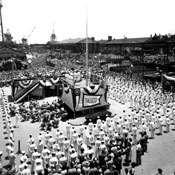
- Gathering at shipbuilding yard: Tampa, Florida
-
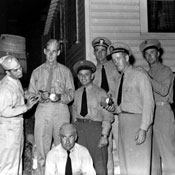
- Ted Williams signing a baseball for Navy personnel : Panama City, Florida
-
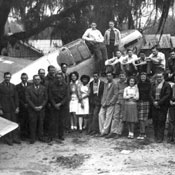
- Wartime production training act students of Leon High School : Tallahassee, Florida
-
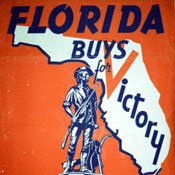
- Florida Buys Victory Poster
-

- Telegram: Ships destroyed in Jacksonville
-
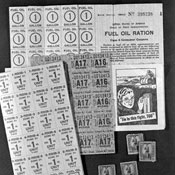
- Fuel oil, gasoline and savings bond stamps.
-
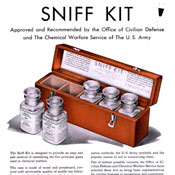
- Sniff Kit
-
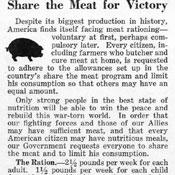
- Save and Serve: Share the Meat for Victory
-

- Letter re: Complacent attitude of the Pensacola people
Documents
- “Loitering banned in Florida: November 20, 1942”
- Courtesy of St. Petersburg Times November 20, 1942
- “Florida's Citrus Shipments Top Records for 19 Years: June 27, 1943”
- Courtesy of St. Petersburg Times June 27, 1943
- Office of War Information Document on Rationing
- To ensure cooperation, the Office of War Information provided information to the public on the often confusing system.
- Courtesy of the Florida State Archives
- “Fido Must Eat Horse Meat - and Like It!: July 18, 1943”
- Courtesy of St. Petersburg Times July 18, 1943
- “City Forgets War to Bow Old Year Out: January 1, 1942”
- Courtesy of St. Petersburg Times January 1, 1942
- “Colonel Gable Builds Hospital Under V Garden: July 25, 1943”
- Courtesy of St. Petersburg Times July 25, 1943
- “Celestial Navigation in 18 weeks”
- This St. Petersburg Times editorial points out that projects undertaken with funds from the Works Progress Administration during the Great Depression are now benefiting the war effort. It tries to counter the idea that WPA projects were a waste of tax-payer money.
- Courtesy of St. Petersburg Times - October 3, 1943
- “City's Best Known 'Newsboy' Peddles Papers in Same Location 18 Years”
- Courtesy of St. Petersburg Times - October 17, 1943
- “Government to Pay for Bombing Damage”
- Courtesy of St. Petersburg Times Archives
